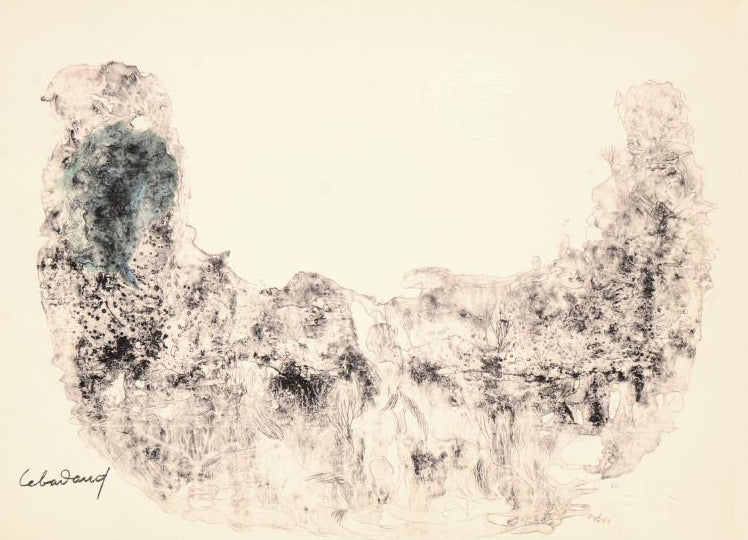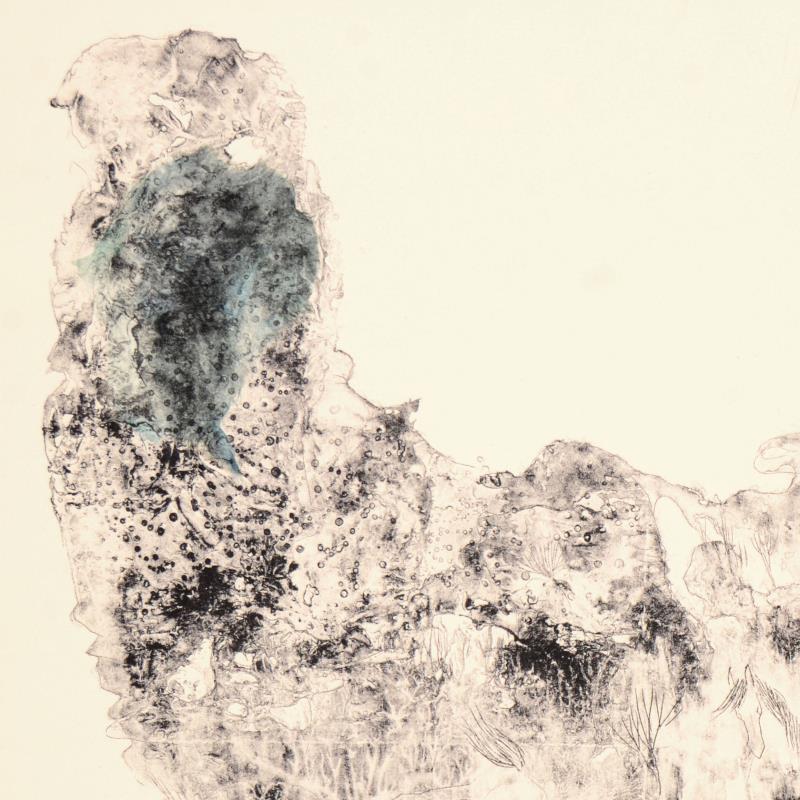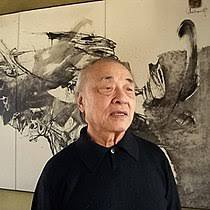Lebadang or Lê Bá Đảng (1921-2015) was a French Artist and Author, best known for his densely textured mixed-media paintings of molded pasteboard, limestone, and pigment on burlap or canvas surfaces. The art of Lebandang often depict forms of horses, floral imagery, Vietnamese villages, and other subjects, transforming from abstraction to the representation of a muted background. The artworks of Labadang are in the collections of the Cincinnati Museum of Art, the Rockefeller Collection in New York, and the Phoenix Museum of Art, among others.
Lebadang was born 1921 in Bich-La-Dong, a village along the Huong River in Quang-Tri Province of Hue, Vietnam. He expressed himself through a variety of media, including painting, watercolor, sculpture, jewelry and graphic works. He often combines various media, creating sculptural, highly textured artwork. He immigrated to Paris, France in 1939. He arrived in Marseilles in 1940, and joined the French Resistance against the Germans. Taken prisoner by the Germans the same year and was held for over 14 month until he escaped and returned to his unit in the Camargue, France. From 1942 to 1948 he studied at the École des Beaux-Arts in Toulouse until his first one-man show in 1950. The Paris art community recognized his work, appreciating the blend of European and Far Eastern culture and philosophies reflected in it. Labadang found his first marketable success painting hundreds of cats on ceramic plates, that are still in high demand.
Lebadang, was an established artist in by the 1960's, after starring in an exhibition at the Cincinnati Art Museum, but always strove to create what was new and exciting. He created large-scale abstract oil paintings with vivid blues and glowing puddles of orange and red. Painting and printmaking are Lebadang’s most frequently used media but he also worked in Terra Cotta and a variety of other media. Whatever he created, each piece spoke to the entangled roles of man and nature. In his 1981 “La Comédie Humaine,” he wrote, “In my work, I use the circle, the magic symbol of life, to enclose reliefs and landscapes. It symbolizes that nature is inseparable from man. Man finds sustenance and spiritual nourishment in every source.” His cast paper reliefs from the 1980's demonstrate this power of the circular shape. The hand made paper he designed was used as a pseudo frame, ornately surrounding the paint and symbolically playing nature. And while the human form was not represented figuratively in his work until the late 1970's, he confirmed that man was always present. “Until now… it was a familiar shape, a simple component in the universe but deprived of its human essence. Thus, it is that my new work has evolved,” he wrote.
By examining Lebadang's paintings, like his untitled works of the 1960's, abstract, brightly colored, and almost ethereal, one gets the sense that his memories were pushing through to the surface. His oil paintings are ambiguous at first glance, yet the faint outlines of boats, bridges, and horses gently float to the top. After a shift in style, he brought definition to his paintings, these dreams are made more lucid. Many of his figures became emotive and highly dramatic, and this time with visible. By the 1990's, he demonstrated a new pictorial theme that is topographical and textured. Mixing media, he painted aerial scenes of mountains and oceans where the viewer is stationed in the heavens. These paintings elaborate on man’s relationship to the natural world, continuously presented as a flurry of memories. From some of his paintings, it’s easy to tell that Lebadang had been inspired by a legacy of French painting, though his work is far more mysterious, cavernous, and delicate. The French were not Lebadang's only inspiration. Vietnam’s millennium under Chinese rule soaks through his art: the mountains, the fog, and especially his square red signature provide parallels to early Chinese painting. Lebadang’s “signature” acts as his own logo and closely mirrors the calligrapher’s square red seal of a Song Dynasty hand scroll. Their size, shape, and color are virtually identical.
Lebadang was honored by the Vietnamese government with the Le Be Dang foundation and museum, the first arts foundation in Vietnam. His work is exhibited in Dusseldorf, Paris, Nantes, Cologne, Cannes and Aix en Provence galleries and is owned in permanent private and public collections including: Rockefeller Collection in New York; Loo Collection in Tokyo; Verkerke Collection in Holland; Phoenix Art Museum in the USA, Cincinnati Museum in the USA, Columbia Art Institute in USA, Lund University Museum in Sweden, Foundation Museum in Kenya, and the Museum of Arts and Letters in France. Lebadang has been honored with numerous awards and accolades during his career. He also designed an award for the International Institute of St. Louis. The Lebadang Award is presented biannually to an individual who has demonstrated extraordinary volunteer service. The award program was established by the institute in 1989 to recognize organizations and individuals who exemplify “Peace within you, your country, and the world. Lebadangon died March 8, 2015 in Paris, France.

 Vendor:Abstract I - Hand Water Colored Limited Edition Embossed Lithograph on Paper by Lebadang (1921-2015)Art Deals
Vendor:Abstract I - Hand Water Colored Limited Edition Embossed Lithograph on Paper by Lebadang (1921-2015)Art Deals



